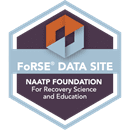Jaywalker Lodge Outpatient Program – Moab Expeditions
From the first time I rolled into Moab, Utah years ago as an Outpatient client, I remember feeling anundeniable sense of awe that I had never felt before in my life. The colors of the orange sand and blue sky, the arid smell of desert air, and sounds of four-wheelers revving their engines had me feeling electric. It was like I woke up in the middle of a John Wayne movie. I sat in the car fantasizing about Indians, cowboys, bandits, uranium, and gun powder.
Just 6 months prior to this trip I was back in Texas hopelessly addicted to crystal methamphetamine. I was homeless, buried in debt, and reaching new bottoms on a daily basis. As I sat in the car in Moab, I felt grateful that I was no longer where I was, but I was still scared because I knew gratitude wasn’t enough to keep me clean and sober. Even with six months of sobriety, the harsh realities of my life were still staring me in the face. My family was devastated, my emotions were hard to keep in check, and my recovery was in a very vulnerable state. I had been six months sober before, I had gone to treatment in the past, I had worked some steps and attended meetings, and I had seen my family’s hopes for me build only to be crushed. My brief recovery was (like the AA Big Book says) “followed always by a still worse relapse.”
In treatment you often hear the question thrown around “What’s going to be different this time?” I absolutely hate this question. I hate this question because it implies that an addict like me will magically be able to muster up enough resolve to suddenly stop using substances and start changing my behavior even though all of the evidence in my life shows me that these are precisely the things I can’t do on my own power. Eventually I found myself answering this question with statements like, “I don’t know, I have no idea what’s going to be any different this time.”
Come to find out this was my way of expressing the principle of surrender because I couldn’t articulate it any other way at the time. Surrender was one thing that I had never fully demonstrated. I had never taken suggestions that I believed to be inconvenient, I had never followed through with my commitments, and I had always argued why I was right and why you were wrong, and I kept getting loaded time and time again. At Jaywalker I finally realized that if I continued doing the things I was doing, I was going to keep getting what I had been getting. So this meant it was time for me to start doing everything differently than I had done before.
On this trip we did everything a good tourist would do – golfing, hiking, biking, climbing, exploring, and eating. Moab is one of those special places that can force you to look beyond what your eyes are telling you. It had me thinking about my life, my path to recovery, and my place in this universe. As we drove around the national parks I started to think about our counselor’s request that we all go skydiving on the last day of the trip. I remember him mentioning that this was going to be our main activity a couple of weeks before, but had tried not to think about it. I’m not going to lie, I was really, really scared. Even though I had started doing things I didn’t want to do, I still had a hard time fully surrendering. The idea of a “comfort zone” didn’t really exist anymore, except for this relentless notion that I needed to have one, and skydiving was not a part of said “zone.” I began to panic silently throughout the entire trip. When no one was watching I would break out in a mild sweat as I considered the thought of exiting an airplane at 17,000 feet above sea level. I had been in harm’s way before, I had felt the feelings of “fight or flight” many times, and historically I have not done well in that space. Needless to say I was completely dismantled by my own fear.
The night before the jump I couldn’t sleep. I tossed and turned for hours. I felt as though I was crawling out of my skin with anxiety. It was literally a psychological nightmare. What about the harness? What if my instructor can’t open the parachute? What if the plane malfunctions? What if I get hurt? What about my family? What if I die? The more I thought about these disaster scenarios the more intense they got.
In AA’s third step it asks us to make a decision to turn our will and lives over to the care of God as we understand him. This was the moment of truth for me. I was always taught that the decision we make in the third step must be backed up by contrary actions, actions that are contrary to what I believe I should be doing. So that night in my bed I committed to going through with the jump.
We woke up early the next morning, packed our things, and headed out. I put my headphones in and started listening to Slayer. This is a ritual I still do to this day. We pulled up to the airport, settled in, and signed the waivers. It was the first time someone said the phrase to me “sign your life away” and it actually meant something. We watched a quick but unsettling video about the inherent risks involved with “sport parachuting” and finally put our harnesses on. It’s safe to say that all of us were freaking out. The plane rolled around the hangar and was literally about as big as a minivan. As the engine roared, the instructors shouted some directions to us and we loaded in. The side door was shut and within sixty seconds we were in the air. I remember it being really warm about half way up, so they opened the door and this rush of cold air flowed in which took my breath away. Despite the incredible view of Arches and Canyonlands I shut my eyes and started praying. This was the only tool I had to regulate myself because I couldn’t breathe, I couldn’t talk, and I couldn’t think, but I could pray. Suddenly, the engine got quiet and we slowed down, the instructors started shouting as they opened the side door again. It sounded like I was in the middle of a tornado, which I imagine resembles the sound of being 17,000 feet in the air of a tiny plane with its door open.
I think my prayers were answered because instinct took over as the instructor and I worked our way to edge of the door. We battled the wind force and stepped onto a metal partition outside the plane as my instructor held onto the wing, and what he said next I’ll never forget. Directly into my right ear I heard him yell, “Send it!” As if I had been skydiving for years, I lunged and did a full backflip right off the side door. I looked up and watched the plane take the shape of a tiny bird as it flew away. I screamed the loudest I had ever screamed in my life. If I could tell you what the face of terror looks like, sounds like, smells like, and tastes like, this would be it for me. It was absolute chaos. What happened next is hard to express because no one prepares you for it. As my stomach started to feel like it was no longer coming out of my throat, I realized that all of my pain, my fear, my sadness, and my shame disappeared completely. In that moment I wanted for nothing and needed for nothing. I was whole. It’s the loudest silence a person can hear. All of this happened at the exact moment we reached terminal velocity, in which my body stopped registering that we were falling, but rather floating. If there was ever a feeling I had been searching for, and I did a lot of searching, this was it, pure unadulterated bliss.
Skydivers are an interesting group of people; many jumpers have struggled with addictions, trauma, and abuse. One jumper I’ve spoken with was a Marine who served two tours overseas, had been shot multiple times, and came back to the states with severe PTSD. He was suffering for years before he stumbled into the Moab airport and jumped his way out of it. As we plummeted toward the Earth, it was a huge relief when the parachute opened. Adrenaline was surging through my body. When we landed back on the ground I was overwhelmed with feelings of purpose and accomplishment. I won’t say pride because that wasn’t it. It was equal parts humility and confidence. I’ve jumped a number of times since then and am now working my way towards a solo jump. Skydiving is interesting because you can continue to add things as you go along. At first I couldn’t imagine doing anything other than screaming the whole way down, let alone having responsibilities to perform in the air. Just like anything else it is a process which involves learning, practicing, and adapting.
Now that I work as the Program Supervisor for Jaywalker’s Outpatient, I believe this experience is exponentially valuable as our men transition back into life and life’s responsibilities. Our recovery literature says that fear is a corrosive thread that weaves in and out of our lives. I think my biggest take away from that experience was realizing that I now have the ability to work with fear instead of against it. I’ve watched a number of men in this program jump out of an airplane, and the one thing they all have in common is that they described having a very similar outlook on fear after they jumped. I don’t believe a person has to skydive in order to learn to work with fear, but if you’re up for an adventure I challenge you to head to Moab, get in the plane, and send it!
Griffin Jarzombek, CAC II

As Chief Executive Officer Bill provides leadership and manage all day-to-day operations of Jaywalker Lodge, an extended care residential addiction treatment program for adult men.




